Layne Norton is a Pro Natural Bodybuilder with the IFPA and NGA. Layne has his PhD in Nutritional Sciences with his thesis emphasis in muscle protein metabolism. He is also an accomplished powerlifter holding the AAPF Squat and Deadlift American Records in the 220 lb class at 568 & 700 lbs respectively.
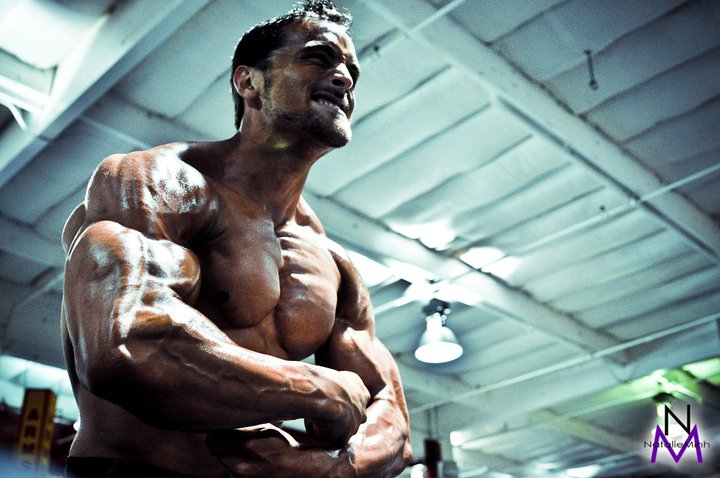
Read on as he bridges the gap between science and hardcore work ethic inside the gym with his “Never Be Outworked” mentality.
PHAT: Power Hypertrophy Adaptive Training
- Written by Dr. Layne Norton
- PhD Nutritional Sciences
- BS Biochemistry
There are some fundamental arguments in bodybuilding. I’m talking about the ones you see ALL THE TIME. How much protein should I take in? What kind of split should I use? How often should I workout? What’s the best rep range for growth? What’s the best volume for growth? Most people try to make these issues out to be black and white to solidify their stances and often fail to acknowledge that these issues are not black and white and there is a substantial gray area. Take the arguments regarding rep ranges for example. How often have you heard you should ONLY train in ‘X’ rep range because it is the best one for growth. Then two days later you see an article interviewing a 300 lb behemoth who trains in a different rep range but also looks insane, so who are you to believe? Recently, there has been a bit of negative bodybuilding press regarding lifting in lower rep ranges with heavier weights. Some researchers and bodybuilders would have you believe that low rep high weight training might be next to useless for bodybuilding. But I think powerlifters could teach bodybuilders a thing or two in some cases. Konstantin Konstantinovs, Brandon Cass, Shawn Frankl, Matt Krockzaleski, and Sam Byrd could easily be stage ready with a few months of dieting and do very well. Stan Efferding and Johnnie Jackson both hold world records in powerlifting and compete as IFBB professional bodybuilders. Many of the bodybuilders from the classic era built their base with powerlifting including Arnold Schwarzenegger and Franco Columbo. Ronnie Coleman, arguably the greatest bodybuilder ever to live never competed in powerlifting but was no stranger to heavy weights. Part of what made his DVD “The Unbelievable so legendary and well… unbelievable was the workout footage of him deadlifting and squatting over 800 lbs and front squatting 600 lbs for reps!
Certainly higher rep ‘pump’ style training has its place for a bodybuilder’s arsenal, no doubt. But so does heavy power training.

Training Frequency
As a person who has competed in both powerlifting and bodybuilding I can tell you that the heavy movements absolutely made me a better bodybuilder. For the longest time my legs were a huge weak point. At my first show my thighs barely measured over 21”. They were absolutely pathetic and I heard about it from EVERYONE especially on the forums. I was called ‘chicken legs’ frequently and it was so frustrating. I was working them out really hard and following the advice of so called ‘bodybuilding experts’ making sure to train with maximum intensity 1x/week but getting plenty of rest to make sure I wasn’t ‘overtraining.’ I was told I did not need to squat or deadlift to get my legs to grow and that was fine by me because squats hurt and I would’ve rather not done them. After a few years of spinning my wheels (pun intended) a friend convinced me to take up a hybrid style routine where I did heavy work (squats, deadlifts, presses) mixed with lighter hypertrophy ‘pump’ work. Against everything I had read I started working out all my body parts 2x/week. This would go on to become the basic template for what would evolve into PHAT (Power Hypertrophy Adaptive Training), a form of non-linear periodization training. Low and behold my legs grew more in 4 months than they had in the previous 4 years. At my following show they came in just over 24”, still very small by bodybuilding standards, but a significant improvement over recent years.
Two years later I won my natural pro card and they topped out over 25” following the same training I had been doing, they were getting better, but still not nearly good enough to hang with the best.

Heavy Iron
One basic concept that convinced me it was important to use heavy weights was that it just made sense to me when I tried to find skinny people who squatted or deadlifted super heavy weights. Come to find out it’s hard to have chicken legs and have a really good squat. I told myself “I am going to squat 500 lbs for reps because there is no way I’ll be able to do that with skinny legs.” I’m sure there are people out there who squat over 500 lbs for reps and do not have impressive leg development, but I certainly haven’t met them yet. So I set out on a quest to squat 500 lbs and deadlift over 600 lbs. Over time I adapted my routine to incorporate more and more pure powerlifting movements and what I found astonished me. I started using bands and chains to help get stronger and I did box squats, speed squats, deficit deadlifts, and rack pulls. All movements I had never even heard of when I started bodybuilding. The result? As we sit today my thighs measure over 28” at the largest part and in addition to that my back has grown immensely. I also own the current AAPF American raw squat and deadlift records at 568 and 700 lbs respectively in the 220 lb weight class. I recently squatted 525 lbs for a triple and 505 lbs for 5 reps. I placed top 5 in my first 4 natural pro shows including the IFPA Pro Natural World Championships and I won the heavyweight class at the IFPA International! At every show the judges commented on how drastically my legs and back had improved from when I won my pro card.
My legs may never be the best onstage because of their shape and structure, but moving heavy iron made them much better and confirmed my initial theory that I would not be able to squat 500 lbs for reps with twig legs.
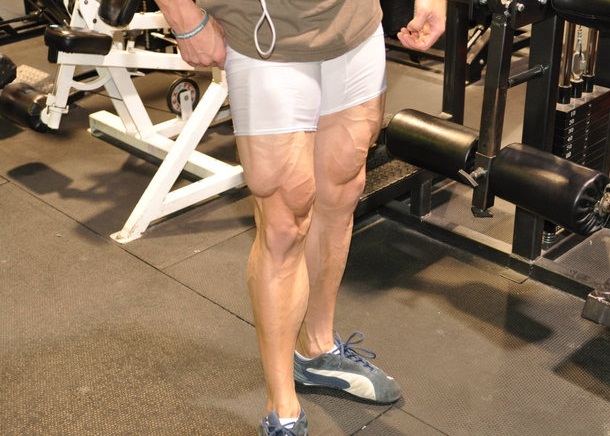
Anabolic Effect
Now you may or may not ever deadlift 700 lbs, but that doesn’t mean you can’t make drastic improvements in your physique by incorporating aspects of power training mixed with hypertrophy. Probably the most important thing heavy training can do is increase your overall capacity for muscular growth through significant strength gains. Training with lower reps and heavier weights is going to stimulate far greater increases in strength than training with light weights for higher reps. But how is that anabolic? I’m sure you are thinking “I am a bodybuilder; I don’t care how much I lift!” But by increasing your strength you will increase the amount of weight you will be able to lift when you train with a higher rep, ‘bodybuilding style’ training which will increase your potential for growth. For example, if one trained only straight high reps (15-20 reps) on an exercise you may end up plateauing at a squat of 300 lbs for 15 reps (not necessarily, just an example). If that same individual incorporated heavy training into their regiment however, perhaps they get strong enough that they can squat 400 lbs for 15 reps. Who do you think will have the greatest potential to increase their mass over the long haul? Most likely it will be the person using more weight if all other variables are equal because they will be able to create more overload and greater muscle damage, evoking a greater growth response. So while pure bodybuilding style training may give you more growth over the short term, a combination of heavy weights for low reps and light weight for high reps over the long term is going to provide more muscle by increasing your growth potential!
So while pure bodybuilding style training may give you more growth over the short term, a combination of power and hypertrophy training over the long term is going to provide more muscle by increasing your growth potential! This is the basis for PHAT.
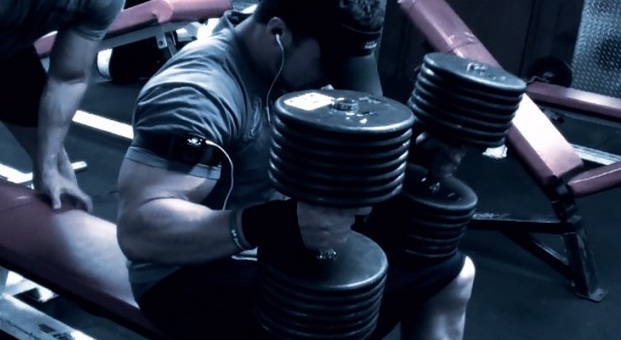
The Principles
There are several dozen forms of the PHAT program but the basic premise is the same. Each muscle gets worked 2x/week. The first 2 days of the week are split into upper and lower body power days. This is followed by a rest day. Then 3 days of traditional hypertrophy orientated bodybuilding training.
An example of the split would be:
- Day 1: Upper Body Power
- Day 2: Lower Body Power
- Day 3: Rest
- Day 4: Back and Shoulders Hypertrophy
- Day 5: Lower Body Hypertrophy
- Day 6: Chest and Arms Hypertrophy
- Day 7: Rest
Power Days
During the first 2 days of the week you will focus on big power movements for your upper and lower body like squats, front squats, deadlifts, deficit deadlifts, and box squats for lower body. Barbell and dumbbell presses and rows as well as weighted pullups for upper body. Your goal should be to stay in the 3-5 rep range for 3-5 working sets on the compound movements (only use one power movement for lower body, presses, and pulls/rows, i.e. don’t do squats and front squats in the same workout). Make sure you rest enough in between sets to completely recover and be ready for your next heavy set. If that means you need to take 5-6 minutes between sets then so be it. The purpose of these workouts is to move maximum weight! Save short rest periods for your hypertrophy days. On your power days you need to have a POWER mentality. Move the heavy ass weight at all costs! A good way to make consistent progress is to rotate your power movements every 2-3 weeks. A few sets of assistance exercises can be done for smaller body parts like hamstrings (though deadlifts and squat will involve significant hamstring recruitment), calves, shoulders, and arms.
Auxiliary exercises would include things like leg extensions, glute ham raises, good mornings, standing and seated calf rises for legs and dumbbell presses, upright rows, curls, and skull crushers for upper body auxiliary work.

Hypertrophy Days
On your hypertrophy days you should do some speed work (6-8 sets of 3 reps) with 65-70% of your 3-5 rep max to start your workout with the power exercise you used earlier in the week. For example if you did squats for 3 sets of 3-5 reps with 300 lbs earlier in the week. Then you would do 6 sets of 3 reps on squats with 195-210 lbs with an emphasis placed on moving the weight through the concentric phase of the lift as quickly as possible. Do not go too heavy on your speed sets; if you cannot move the weight explosively then it is too heavy! Rest no longer than 90 seconds in between each of the speed sets. This builds explosiveness and speed and may stimulate growth as well. Even though you are using less weight, you should still be applying maximum force to it. To elaborate on this point, you can apply the same force to 250 lbs that you apply to 400 lbs, 250 lbs will just move faster, and that is the point you want your body to be explosive. If you have access to chains or bands they can be VERY helpful in building your explosiveness. If you choose to use them however you may want to lower the weight you are using to compensate for the increased loading at the top end of the movement.
Make sure the weight is light enough that you can move it explosively. If you are slowing down at any point during the concentric phase then it is likely too heavy.
More Important Notes
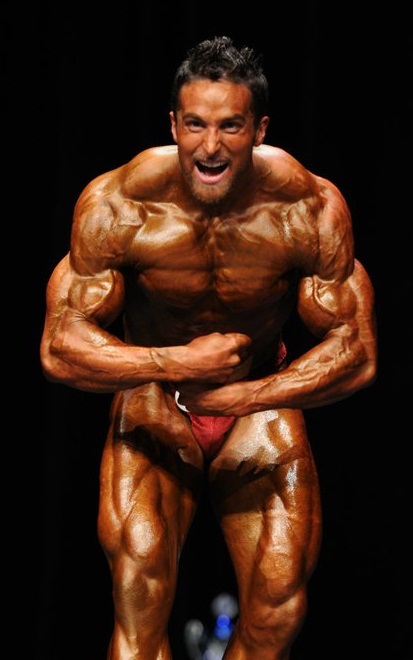 After you finish with your speed work for the day you should train basically like you normally would for a bodybuilder. Your rep range should be 8-20 and keep your rest periods to 1-2 minutes between sets. I would increase the volume of these sessions by approximately 50-75% compared to your power days. Make sure you do not over use failure on your hypertrophy days or you will burn out quickly. I only recommend going to absolute failure on the last 1-2 sets of each exercise once you have adapted to the routine. On prior sets stop 1-2 reps shy of failure.
After you finish with your speed work for the day you should train basically like you normally would for a bodybuilder. Your rep range should be 8-20 and keep your rest periods to 1-2 minutes between sets. I would increase the volume of these sessions by approximately 50-75% compared to your power days. Make sure you do not over use failure on your hypertrophy days or you will burn out quickly. I only recommend going to absolute failure on the last 1-2 sets of each exercise once you have adapted to the routine. On prior sets stop 1-2 reps shy of failure.
This may seem counter intuitive but it will help you maintain a greater overall power and volume during the workout and it will prevent neural fatigue and burnout. For the first 2-4 weeks you should NOT train to failure at all until your body becomes accustomed to the volume and frequency.
Overtraining Factor
Now I know you are thinking “I will overtrain if I workout each bodypart 2x/week!” While the first few weeks you may be very sore, tired, and not feel great, if you push through this after about 4-6 weeks you will find that your body will adapt to the increased frequency and you will hardly get sore more for more than a day. You will also find that your strength will start to skyrocket! I do recommend deloading once every 6-12 weeks however. A deload would consist of 1-3 weeks of lifting at 60-70% of your normal weights. This will be enough to maintain your strength, but light enough to allow you to actively recover.
Keep in mind one thing when starting this routine, it is not for the faint of heart, but heavy iron, is no match for an iron will. If you are mentally and physically tough enough, you may just power your way to new gains!
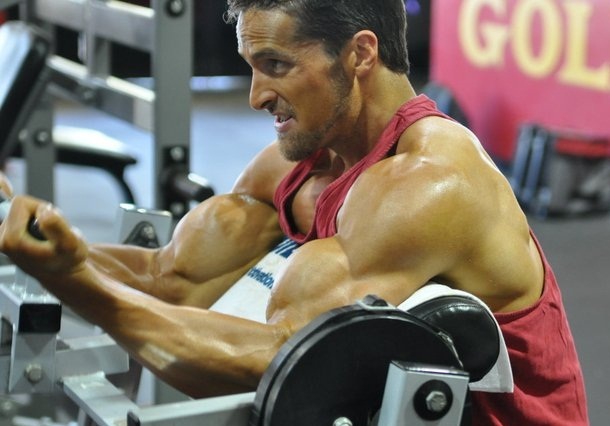
Power Hypertrophy Adaptive Training Routine:
Note: Make sure you warm up thoroughly for all exercises, stretch, and use precaution when using heavy weights.
Day 1: Upper Body Power Day
- Pulling Power Movement: Bent over or Pendlay rows
3 sets of 3-5 reps - Assistance Pulling movement: Weighted Pull ups
2 sets of 6-10 reps - Auxiliary Pulling movement: Rack chins
2 sets of 6-10 reps - Pressing Power Movement: Flat dumbbell presses
3 sets of 3-5 reps - Assistance pressing movement: Weighted dips
2 sets of 6-10 reps - Assistance pressing movement: Seated dumbbell shoulder presses
3 sets of 6-10 reps - Auxiliary curling movement: Cambered bar curls
3 sets of 6-10 reps - Auxiliary extension movement: Skull crushers
3 sets of 6-10 reps
Day 2: Lower Body Power Day
- Pressing Power Movement: Squats
3 sets of 3-5 reps - Assistance pressing movement: Hack Squats
2 sets of 6-10 reps - Assistance extension movement: Leg extensions
2 sets of 6-10 reps - Assistance pulling movement: Stiff legged deadlifts
3 sets of 5-8 reps - Assistance pulling/curling movement: Glute ham raises or lying leg curls
2 sets of 6-10 reps - Auxiliary calf movement: Standing calf raise
3 sets of 6-10 reps - Auxiliary calf movement: Seated calf raise
2 sets of 6-10 reps
Day 3: Rest
Day 4: Back and Shoulders Hypertrophy Day
- Pulling Power Exercise speed work: Bent over or Pendlay rows
6 sets of 3 reps with 65-70% of normal 3-5 rep max - Hypertrophy pulling movement: Rack chins
3 sets of 8-12 reps - Hypertrophy pulling movement: Seated cable row
3 sets of 8-12 reps - Hypertrophy pulling movement: Dumbbell rows or shrugs bracing upper body against an incline bench
2 sets of 12-15 reps - Hypertrophy pulling movement: Close grip pulldowns
2 sets of 15-20 reps - Hypertrophy shoulder movement: Seated dumbbell presses
3 sets of 8-12 reps - Hypertrophy shoulder movement: Upright rows
2 sets of 12-15 reps - Hypertrophy shoulder movement: Side lateral raises with dumbbells or cables
3 sets of 12-20 reps
Day 5: Lower Body Hypertrophy Day
- Lower Body Power Exercise speed work: Squats
6 sets of 3 reps with 65-70% of normal 3-5 rep max - Hypertrophy pressing movement: Hack squats
3 sets of 8-12 reps - Hypertrophy pressing movement: Leg presses
2 sets of 12-15 reps - Hypertrophy extension movement: Leg extensions
3 sets of 15-20 reps - Hypertrophy pulling movement: Romanian deadlifts
3 sets of 8-12 reps - Hypertrophy curling movement: Lying leg curls
2 sets of 12-15 reps - Hypertrophy curling movement: Seated leg curls
2 sets of 15-20 reps - Hypertrophy calf movement: Donkey calf raises
4 sets of 10-15 reps - Hypertrophy calf movement: Seated calf raises
3 sets of 15-20 reps
Day 6: Chest and Arms Hypertrophy Day
- Pressing Power Exercise speed work: Flat dumbbell presses
6 sets of 3 reps with 65-70% of normal 3-5 rep max - Hypertrophy pressing movement: Incline dumbbell presses
3 sets of 8-12 reps - Hypertrophy pressing movement: Hammer strength chest press
3 sets of 12-15 reps - Hypertrophy fly movement: Incline cable flyes
2 sets of 15-20 reps - Hypertrophy curling exercise: Cambered bar preacher curls
3 sets of 8-12 reps - Hypertrophy curling exercise: Dumbbell concentration curls
2 sets of 12-15 reps - Hypertrophy curling exercise: Spider curls bracing upper body against an incline bench
2 sets of 15-20 reps - Hypertrophy extension exercise: Seated tricep extension with cambered bar
3 sets of 8-12 reps - Hypertrophy extension exercise: Cable pressdowns with rope attachment
2 sets of 12-15 reps - Hypertrophy extension exercise: Cable kickbacks
2 sets of 15-20 reps
Day 7: Rest
Keep in mind this workout would be for someone who is relatively adapted to higher frequency and volume, so you may want to cut out an assistance/auxiliary exercise on each day to start until your body adapts.
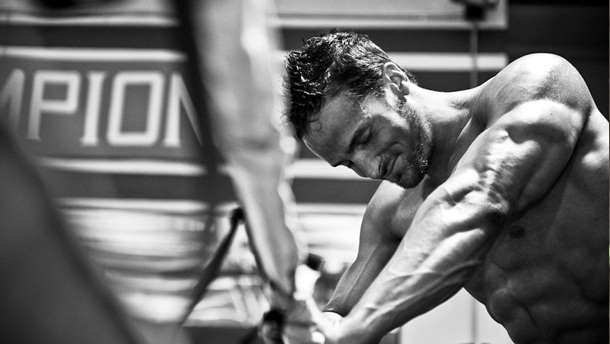
Frequently Asked Questions:
What do I do when I plateau on this routine?
The first thing I would recommend doing is changing your power/accessory exercises. Just doing that can often make a difference. Beyond that you need to look at where your sticking points are on various lifts. Where are you having trouble in the lift and how can you improve that aspect of the big lifts? For example, if you really want to improve your deadlift and you are having trouble with them, specifically moving the bar off the floor and through the first part of the movement, then I would start focusing on doing deficit deadlifts standing on a 2-4″ box. If you are having difficulty locking out the deadlifts then I would do rack pulls from slightly below the knee to help you get stronger in that part of the lift.
I have included exercises/accessory work that can help you on various lifts.
Squats:
Typically people are weak in the hole and I would recommend doing below parallel box squats to help fix this. Make sure you sit down to the box and pause on it. Also good mornings may help back strength to maintain your arch in the hole and deep hack squats may help increase quad strength for deep reps.
Deadlifts:
If you are weak off the floor, then focus on deficit deadlifts from a 2-4″ box. If you are weak at the lockout then do rack pulls from just below the knee. If you have access to bands or chains I would also recommend adding those in as they will make the lockout more difficult.
Presses:
If you are weak midway through the movement or at the lockout, really focus on triceps strength using close grip presses, dips, or skull crushers. Adding bands or chains will also help with lockout of a press. If you are weak at the bottom, try doing presses where you pause for a 3 count at the bottom before pressing.
Deload:
If changing exercises and focusing on weak portions of the lifts themselves don’t improve things you may need to deload for 1-3 weeks. I don’t schedule deloads, I take them when I need them which is typically every 6-12 weeks. How long you take it for will depend on how long it takes you to feel mentally and physically refreshed and focused. For a deload I recommend doing your normal routine, but only using 60-70% of normal weights. So for if you would normally do 3 sets of 5 on squats with 300 lbs., I would recommend doing 180-210 lbs. on squats for 3 sets of 5.
This will be light enough to allow active recovery but heavy enough for you to maintain your muscle mass and strength.

How can cardio be incorporated into your routine?
You can adapt to almost anything with this routine but it will take time. I did PHAT training all the way up to my show and by the end I was doing cardio almost everyday. In the offseason I typically incorporate 1-2 days of high intensity cardio per week including car pushes, sled dragging, sprints with a sprint parachute, as well as some other circuit style workouts for cardio. I also do the typical elliptical/bike cardio intervals as well. When you first start with PHAT you may want to limit the cardio to 1x/week until your body adapts to the volume and frequency of the routine. If you find your legs are overly sore then I would suggest just doing some moderate intensity cardio to get some blood flow in the area and perhaps skip the HIIT for the week until your body gets adjusted to the training.
You can also focus on cardio that does not involve the legs so much like using the rowing cardio machine or doing some heavy bag training for cardio.
Why aren’t all sets to failure?
Failure is a tool and has to be used correctly. During the first 3-6 weeks of the routine I would NOT recommend taking sets to failure as doing so will burn you out physically and mentally very fast. I’d recommend stopping 1-2 reps shy of failure. Once you get adjusted to the volume and frequency then you can start adding in failure for your power movements and some of your accessory/auxiliary work as your body gets more adjusted. You should never train to failure consistently more than 6 weeks in a row without at least a partial break from it. The reason I recommend this is because if you constantly train to failure it will decrease your performance, strength, reduce the volume you are able to tolerate, and ultimately reduce your hypertrophic capacity. There is this notion out there that any set not taken to failure is a wasted set, but that’s complete NONSENSE that has been perpetuated over the years by people who have not read the research.
Indeed, research has shown that sets taken near, but not to failure are almost, if not as effective as sets taken to failure on inducing growth and there is the added benefit that they do not overtax your nervous system to the point where it reduces your strength, power, and volume output.
Example:
For example, if you train to all out maximum concentric failure on bench press and hit failure on your 6th rep. The next set you probably will only get 3-4 reps, and the following set you might get 1-3 reps. As you can see your output decreases very quickly. But if you only took the first set to the 5th rep, it is quite likely you could take each subsequent set to 4-5 reps and so overall you have actually had a more effective workout by staying away from failure because you were able to maintain your power/strength output over several sets.
People don’t realize that overload is cumulative over the workout and adding more volume is actually a way to induce more overload, not just by adding more weight/reps. Again, there is nothing wrong with taking some sets to failure once you are adapted to the routine, but it has to be properly periodized to avoid performance decrements and CNS overtaxing.

How can regular deadlifts be implemented into this routine?
I recommend putting deadlifts on the power lower body day. Some people seem to believe that deadlifts are an upper body exercise and while they do involve the back muscles, the deadlift is moreso a posterior chain exercise and requires a good deal of hip flexion. The movement is like cross between a good morning and a squat essentially and so there is also substantial lower back, hamstring, glute, and quad activation. Thus I recommend keeping them on leg days. I would not do squats and deadlifts on the same day unless you have been doing PHAT for a long time and you are very adapted to the routine and are able to tolerate it. Otherwise I would suggest alternating the movements or doing a squat movement for a few weeks on your power day and then a deadlift movement for a few weeks. If you are someone who has really good quads and weak hamstrings/lower back then maybe 3 out of every 4 weeks you do a deadlift movement for your power exercise.
If you are like me and have strong hamstrings and lower back but weak quads then maybe do a squat movement 3 out of every 4 weeks and then do a deadlift movement for your power move once per month. That said you can always work in some form of a deadlift variation or squat variation as an accessory exercise as well.
Training Series Part 1
Training Series Part 2
Training Series Part 3
Music By: Chimaira
About The Author
Dr. Layne Norton is a pro natural bodybuilder with the IFPA and NGA and pro powerlifter. He completed his PhD in Nutritional Sciences with his area of emphasis in muscle protein metabolism from the University of Illinois.
Website: www.biolayne.com
Bodyspace: www.bodyspace.com/str8flexed
Photography: http://nmlifestylemag.com/
Copyright – Simplyshredded.com










